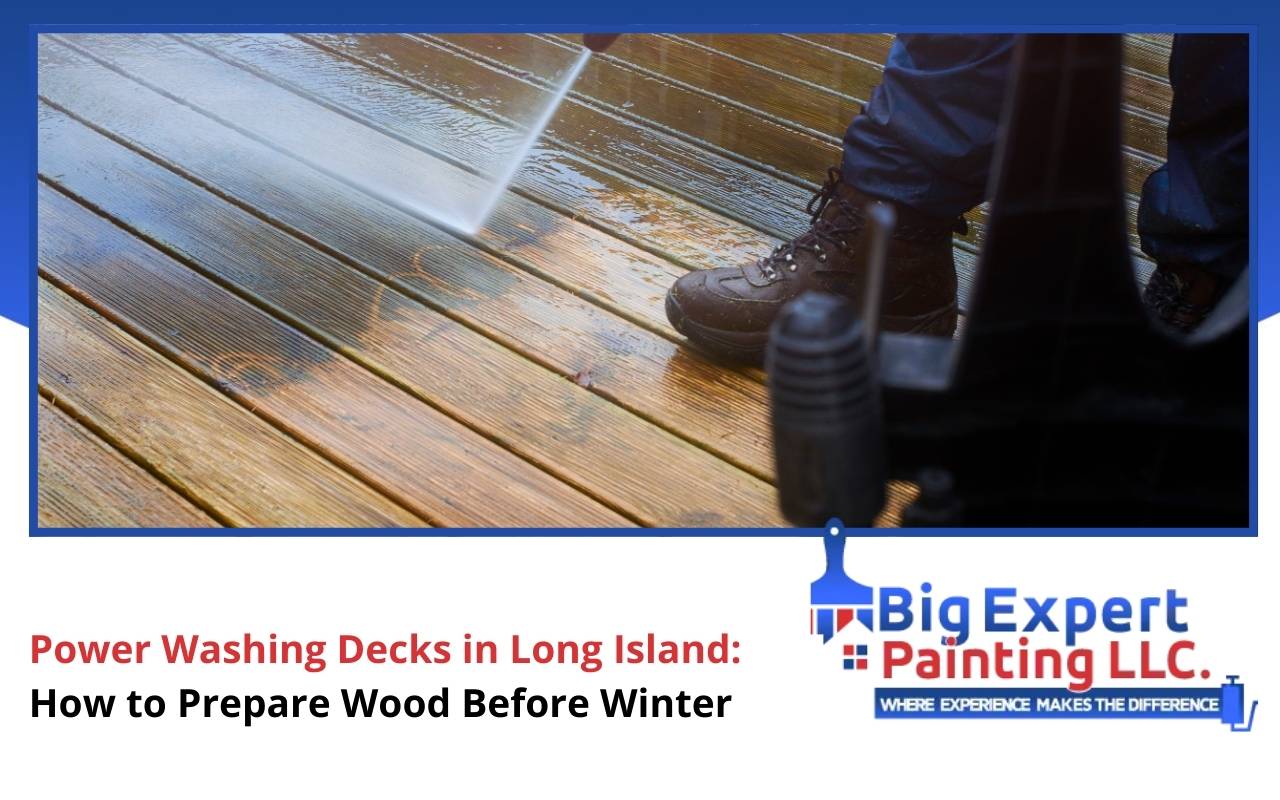
Power Washing Decks in Long Island: How to Prepare Wood Before Winter
As the crisp autumn air sweeps across Long Island, homeowners must prepare their decks for the harsh winter months. Neglect often leads to costly repairs and visible damage. Many overlook preparation, allowing wood rot, mildew buildup, and surface degradation. This is where power washing deck Long Island becomes essential. It is not only about blasting away grime; it ensures durability throughout the coldest season. Choosing between soft washing and pressure washing can feel confusing, but both have clear benefits. Whether you own cedar or composite, the right pressure settings and techniques help preserve your outdoor retreat.
Importance of Preparing Your Deck for Winter
Preparing your deck prevents moisture intrusion and frost damage. Trapped water freezes, expands, and cracks the wood. A well-prepared deck resists rot and weakening during freeze–thaw cycles. By scheduling power washing deck Long Island, you eliminate debris that holds moisture. Even cedar, known for decay resistance, may still discolor and develop mildew. Composite surfaces resist decay better, but grime and algae still pose risks. Pre-winter washing ensures stains or sealants penetrate properly in spring. Ultimately, proactive steps save time and money while extending deck life.
Signs of Damage to Look Out For
Before using a washer, inspect the deck carefully. Look for cracks, splits, or warped boards. Check posts and joists where water gathers. Mildew spots or black streaks appear frequently on cedar. Composite decks may show dark mold patches near seams. Loose or raised nails require attention after cleaning. Spotting these issues early ensures repair before winter worsens the damage.
Benefits of Power Washing Your Deck
- Removes built-up dirt, pollen, and debris effectively.
- Revitalizes natural wood grain and warm cedar hues.
- Restores the appearance of composite deck surfaces.
- Eliminates mold spores and algae in shaded areas.
- Extends deck lifespan and improves safety.
With deck painting services available afterward, the cleaning process sets the stage for strong protection.
Understanding the Difference Between Soft Washing and Pressure Washing
Soft washing uses low pressure with detergents, perfect for older cedar or delicate composites. Pressure washing uses higher force to remove stubborn grime or paint. Each method depends on your deck’s condition, buildup type, and refinishing plans. Knowing when to apply the right method guarantees a longer-lasting clean.
Choosing the Right Pressure Settings for Your Deck Material
- Start at 500–800 PSI for softer woods like cedar.
- Use up to 1,200 PSI for composites.
- Test a small section before full cleaning.
- Increase gradually in 100 PSI increments.
This careful approach ensures surfaces are cleaned safely while maintaining integrity. For larger refinishing needs, explore exterior painting services.
Effective Techniques for Removing Mildew
Successful mildew removal requires a blend of cleaning solutions and correct tools. A bleach solution with deck detergent kills spores at the root. Allow the mix to dwell before rinsing. Scrub tough patches using a nylon brush, then rinse with a fan tip at low PSI. Ensure full drying to prevent new mildew growth. Regular spot treatments help maintain appearance year-round.
Tools and Equipment Needed for Power Washing
- Pressure washer with adjustable PSI and fan tip.
- Surface cleaner attachment for flat areas.
- Cleaning solutions for wood or composite surfaces.
- Stiff-bristled brush for corners and grooves.
- Protective gear such as goggles and gloves.
Proper equipment creates professional-level results. For structural concerns, pair this step with deck repair services.
Safety Precautions to Follow During Power Washing
Safety should never be ignored. Always wear protective eyewear, gloves, and sturdy footwear. Never point the spray wand toward people or glass. Work carefully on ladders and keep pets and children away until dry. Respect machine guidelines for nozzle use and PSI to avoid injury or damage.
Other Pre-Winter Deck Maintenance Tips
In addition to power washing deck Long Island, several steps can protect your investment. Tighten loose fasteners, replace damaged boards, and apply a protective sealant or stain. Cedar benefits from oil-based stains while composite decks need specialized cleaners. Clear debris between boards, trim overhanging branches, and store furniture off the deck. These habits reduce moisture problems during the cold months.
FAQs About Power Washing Decks in Long Island
How often should I power wash my deck in Long Island?
Most experts recommend washing at least once a year, ideally before winter or spring.
Is power washing safe for cedar decks?
Yes, when using low PSI and soft washing methods, cedar decks remain protected and refreshed.
Can composite decks be power washed?
Absolutely, though using the right PSI and fan tip prevents delamination and surface damage.
Should I seal my deck immediately after power washing?
Yes, once the deck dries fully, sealing enhances protection and extends durability.
Do I need professional help for power washing?
While DIY is possible, professionals ensure correct pressure settings, safe handling, and lasting results.
Ensuring Your Deck’s Longevity and Beauty
Deck preparation for winter requires more than a quick rinse. It involves careful power washing deck Long Island, inspection, and sealing. By balancing soft washing, PSI settings, and mildew treatments, you ensure a longer life for your deck. Take action now and enjoy a strong, attractive deck next spring. For expert assistance, visit our contact page and let professionals handle the process.
